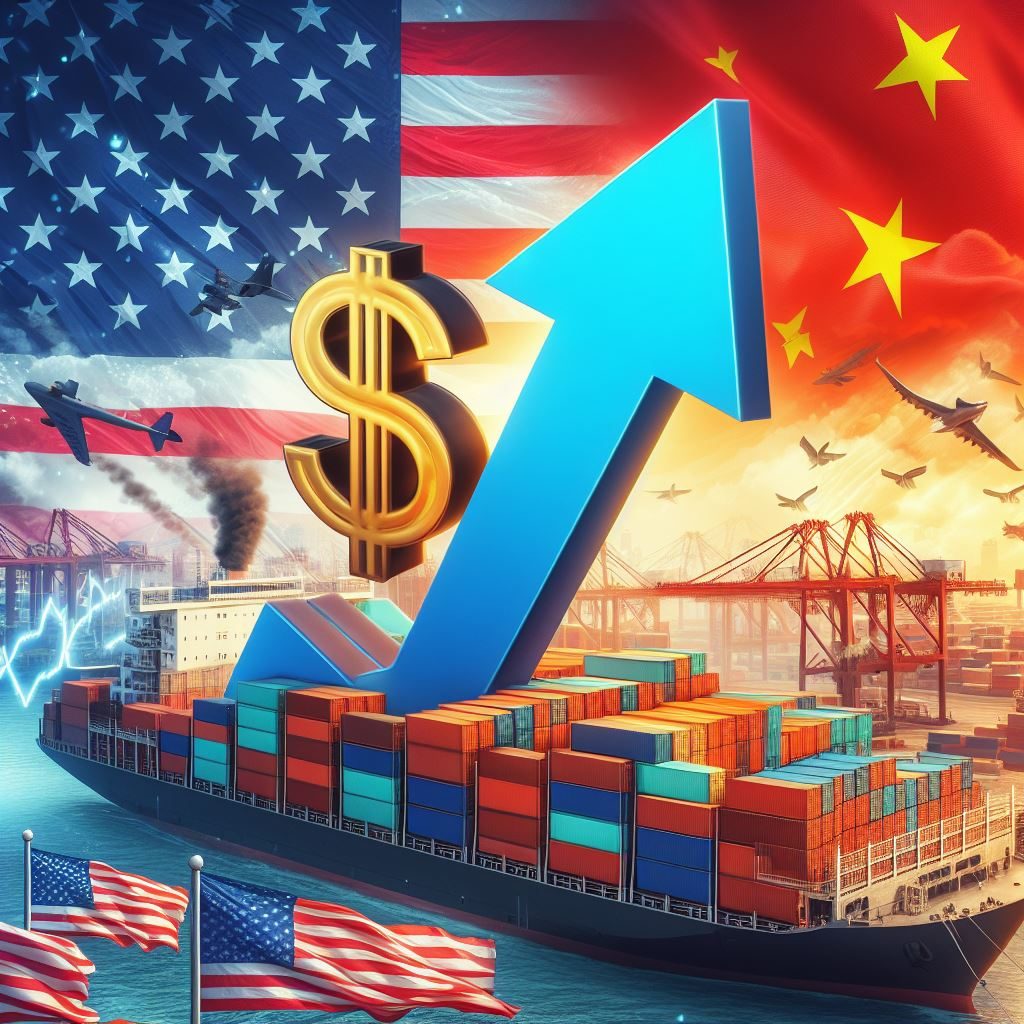China Is Feeling the Tariffs – Is Trade Deal on the Way?
China is feeling the effects of the Trump Administration’s tariff hikes, which have reached 145% on Chinese goods. While tariff retaliation has been President Xi Jinping’s response, the escalating trade war has greatly reduced Chinese exports to the U.S., caused manufacturers there to reduce or close operations, and put millions of Chinese jobs at risk.
Just days ago, in an Epoch Times article, Alex Wu reported on Chinese factories that produce goods for export suspending their production:
Dongguan Dehong Electrical Appliances Co. Ltd. (Dongguan Dehong), based in Dongguan city, Guangdong Province, issued a notice to all employees, relieving them from work for a month starting on April 11…
…
Dongguan Dehong is not the only factory in China that has suspended production indefinitely due to the U.S.–China tariff war. There have been reports on Chinese social media that foreign trade companies in Zhejiang, China’s major exporting province, will halt production or operations and allow employees to take indefinite leave.
This trend also appears to have extended to other major export cities and provinces, such as Suzhou in Jiangsu Province and Dongguan in Guangdong Province, signaling a challenging period for China’s foreign trade.

Meanwhile, Laura Robb is reporting in the Journal of Commerce (JOC) about ocean freight carriers cutting trans-Pacific capacity due to “sharp reduction in Chinese cargo”:
With far fewer US-bound goods leaving Chinese docks, carriers have accelerated the raft of blank sailings and service suspensions that began earlier this month, sources tell the Journal of Commerce.
Bookings for China to the US have dropped nearly 54% during the week of April 21–28 versus the comparable week in March, according to maritime visibility provider Vizion and data and analytics company Dun & Bradstreet.
Carriers Zim Integrated Shipping Services, Mediterranean Shipping Co., and Premier Alliance members HMM, Ocean Network Express (ONE) and Yang Ming have all announced capacity reductions on the trade as volumes plummet.
As reported by the Times of India tariff news updates, Chinese officials say China is using policies that include “easier lending conditions” to counter the impact of U.S. tariffs for companies and the unemployed. But things don’t look easier in China. In fact, those updates also report the International Monetary Fund has drastically downgraded China’s 2025 growth forecast to about 4%, warning that millions of export-related jobs are at risk.
For risk of losing power, President Xi can’t afford to show weakness toward the U.S. However, with China’s economy so dependent upon exports, particularly to the U.S., he’s in a weakened position. With famous statements over the last several years like telling his people to be ready to “eat bitterness,” President Xi seems willing to let the Chinese people suffer to hold his ground against the U.S. However, suffering these high tariffs does not seem sustainable for China.
Secretary of the Treasury Scott Bessent said as much in a press briefing today. He said he thinks we’ll see over time that these “tariffs are unsustainable for China.” He got into particulars with “I’ve seen some very large numbers over the past few days to show if these numbers stay on, [the] Chinese could lose 10 million jobs very quickly. And even if there is a drop in the tariffs that they could lose 5 million jobs.”
Bessent went on to emphasize, as he has before, that the U.S. is the deficit country, with China selling almost five times the goods to us as we sell to them. “… so the onus will be on them to –the, uh– take off these tariffs. They’re unsustainable for them.”
Of course, that raises the question…
Is There a Trade Deal on the Way Between the U.S. and China?
The reporters in the presser brought up to Bessent that China says the U.S. and China are not talking about the tariffs. It would certainly be hard for a trade deal regarding such things as tariffs to come about if the countries are not even talking about them. President Trump, on the other hand, has indicated that some talks on the subject are starting to take place.
Secretary Bessent did not go so far as to say China is lying about it, but he did indicate that China has other reasons to say talks about tariffs aren’t happening:
“Look, they have a different form of government; they’re playing to a different audience…”
He refused to get into the “nitty-gritty” about who’s talking to whom, but reemphasized the tariffs being unsustainable for China. I think, because of that unsustainability and because of recent history, there’s a good chance we will see a trade deal between the U.S. and China.
This U.S./China trade war is reminiscent of what we saw between the countries during President Trump’s first term. That time around, escalating tariffs culminated in the Phase One Trade Agreement, which was full of concessions by China. Unfortunately, the same month – December of 2019 – that the trade deal was reached, COVID-19 – which had leaked from the Wuhan Institute of Virology – spread through Wuhan, China. As it quickly went from outbreak to epidemic to full pandemic, the Phase One Trade Deal became a casualty in the chaos. China didn’t follow through on it.
I can’t imagine a world in which President Trump doesn’t want a new trade deal with China that includes all the concessions China made the first time around and probably more.
If you’ve heard such a deal is doubtful, consider how even after the first deal was supposed to be close, things shifted back to doubtful. In the month leading up to the deal, reporting and sentiment said the Phase One Trade Agreement was unlikely to happen.
But it did happened. And that the current tariffs are much harder on China’s economy than they are on ours, as was also true last time, means a new one will likely happen too. The wider tariff strategy from the Trump Administration, seeking new trade deals from partners around the world, and in Asia particularly, probably adds even more pressure on China.
When asked about a possible timeline for trade deals with Asian trade partners like India, Japan, and South Korea, Secretary Bessent said, “I’m glad you brought up our Asian trading partners and allies. Uh, they have been – uh – the most forthcoming in terms of doing the deals. As I mentioned, Vice President Vance was in India last week. I think that he and [Prime Minister Narendra] Modi made some very good progress, so I could see some announcements on India. I could see the contours of a deal with the Republic of Korea coming together. And then we’ve had substantial talks with the Japanese.”
Trade deals with these other countries could potentially shift U.S. importing demand away from China in a more permanent sense, which would be a major problem for the country. I would expect it to take months and for China to be as quiet about it as possible, but they’re in a position where they need a trade deal with the U.S. Thus, I would say, yes, a trade deal is on the way.
Eventually.
Whatever talks may have happened so far would likely be in their infancy. But perhaps a model for a new trade deal already exists in the Phase One Trade Agreement. That could have the potential of speeding things up whenever talks happen in earnest.





